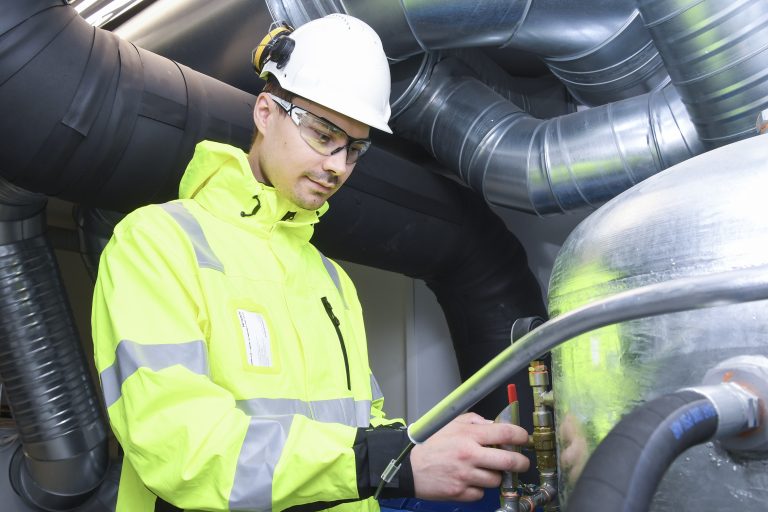How is compressed air produced responsibly?

Compressed air production consumes energy. Energy accounts for 75% of the life cycle cost of a compressed air system. How efficiently the energy needed is used now and in the future is essential for companies striving for sustainable development. Responsible compressed air production can be achieved through optimized production, consumption monitoring and equipment control.
The energy costs of compressed air production do not only burden the company’s finance, but also are an important factor in the introduction of sustainable production methods. An efficient and correctly dimensioned compressed air system optimizes production and reduces energy consumption. A well-functioning pipe network, consumption monitoring and control, as well as proactive maintenance and production capacity sized to demand increase the overall efficiency of the system. This, in turn, is directly reflected in the company’s CO2 emissions, for example.
Energy efficient compressed air production
Compressed air is a fourth basic commodity essential in many industrial processes, such as electricity, water and steam. Although compressed air technology is constantly evolving, certain elements remain unchanged. The measurement and monitoring of the most important indicators help to develop, among other things, the functionality and operational reliability of the compressed air system. Pressure level, air consumption and specific power are the key factors of energy efficient production.
Correct network pressure
Compressed air network overpressure leads to increased air consumption as compressed air equipment uses more air and leaks increase. If the network pressure is reduced from 7 bar to 6 bar, air consumption is reduced by 12%. It is good to identify end-users that are critical to the pressure level and to consider what is the required pressure level and air volume in these applications in relation to the need of the entire system.
Controlled reduction and optimization of the pressure level has a significant effect on the energy consumption of the compressed air system.
Consumption monitoring finds leaks
Monitoring of compressed air consumption (m3/min) helps to detect deviations. On average, 20-30% of the air produced by compressors disappears in leaks, for example from bad connections, broken hoses and valves.
Consumption monitoring and systematic repair of leaks pay for themselves quickly.
Compressed air control saves energy
In specific power (kW/m3/min) indicator, the electrical power used by the compressors compares to the amount of air produced. The goal is often to keep the number as small as possible, but that alone is not enough to describe the efficiency. In practice, relative power is most affected by the equipment, their operation and the right control strategy.
Take an example, a system with optimal operation of the compressors and a good specific power of 6 kW/m3/min at a pressure of 7 bar. When we reduce the system pressure to a more favorable 6 bar, the air consumption decreases by the above-mentioned 12%. Correspondingly, the output of compressors will be reduced by 12%. Still, the specific power of the compressors can become less favorable 6.25 kW/m3/min. System control saves energy thanks to reduced compressed air consumption.
Energy efficient compressed air solution
The above-mentioned pressure, air consumption and specific power play a crucial role in the search for the best possible solution for compressed air production. Energy efficiency is a significant factor, especially in industrial processes, as compressed air accounts for an average of 10% of total electricity consumption. With adjustments and control, even large savings can be achieved, both economically and from environmental point of view.
Sarlin is a pioneer in compressed air technology. We have been developing compressed air solutions for about 70 years. Sarlin offers the best compressed air technology solutions, tools and know-how to make compressed air production reliable, energy efficient and cost effective.